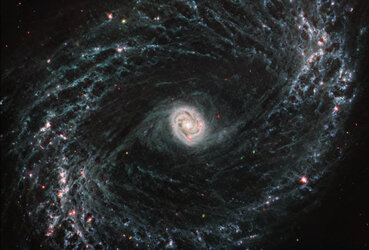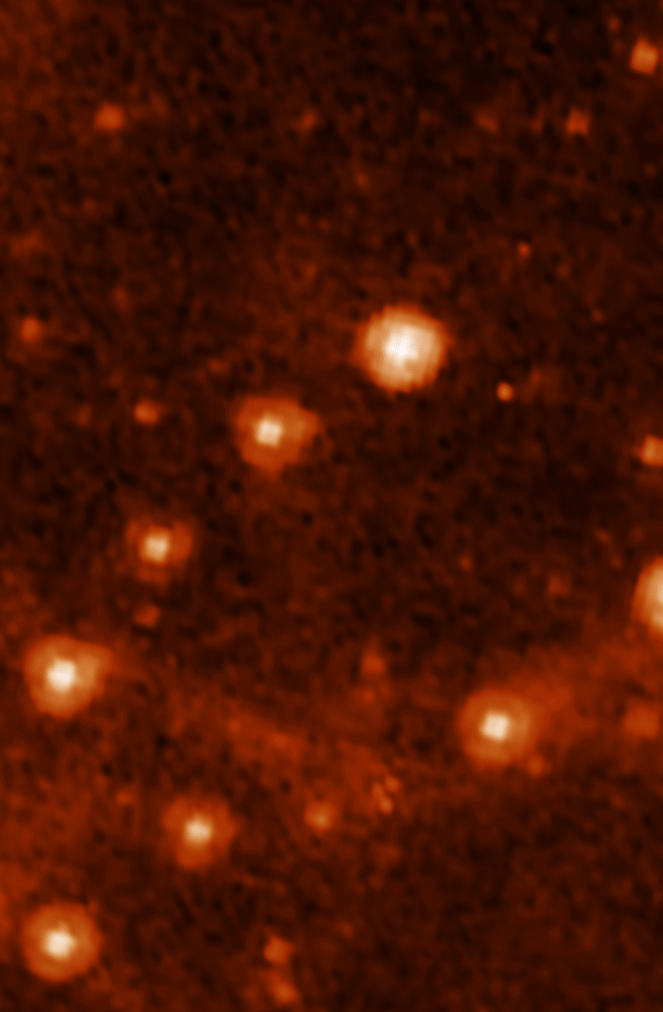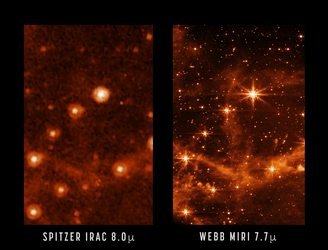

NGC 7496 (MIRI image)
Scientists are getting their first look with the NASA/ESA/CSA James Webb Space Telescope’s powerful resolution at how the formation of young stars influences the evolution of nearby galaxies. The spiral arms of NGC 7496, one of a total of 19 galaxies targeted for study by the Physics at High Angular resolution in Nearby Galaxies (PHANGS) collaboration, are filled with cavernous bubbles and shells overlapping one another in this image from Webb’s Mid-Infrared Instrument (MIRI). These filaments and hollow cavities are evidence of young stars releasing energy and, in some cases, blowing out the gas and dust of the interstellar medium they plough into.
Until Webb’s high resolution at infrared wavelengths came along, stars at the earliest point of their lifecycle in nearby galaxies like NGC 7496 remained obscured by gas and dust. Webb’s specific wavelength coverage (7.7 and 11.3 microns), allows for the detection of polycyclic aromatic hydrocarbons, which play a critical role in the formation of stars and planets. In Webb’s MIRI image, these are mostly found within the main dust lanes in the spiral arms.
In their analysis of the new data from Webb, scientists were able to identify nearly 60 new, undiscovered embedded cluster candidates in NGC 7496. These newly identified clusters could be among the youngest stars in the entire galaxy.
At the centre of NGC 7496, a barred spiral galaxy, is an active galactic nucleus (AGN). An AGN is a supermassive black hole that is emitting jets and winds. The AGN glows brightly at the centre of this Webb image. Additionally, Webb’s extreme sensitivity also picks up various background galaxies,far distant from NGC 7496, which appear green or red in some instances.
NGC 7496 lies over 24 million light-years away from Earth in the constellation Grus. In this image of NGC 7496, blue, green, and red were assigned to Webb’s MIRI data at 7.7, 10 and 11.3, and 21 microns (the F770W, F1000W and F1130W, and F2100W filters, respectively).
MIRI was contributed by ESA and NASA, with the instrument designed and built by a consortium of nationally funded European Institutes (The MIRI European Consortium) and NASA’s Jet Propulsion Laboratory, in partnership with the University of Arizona.





